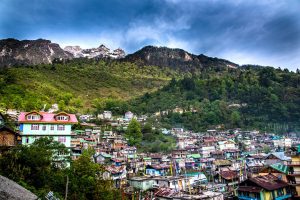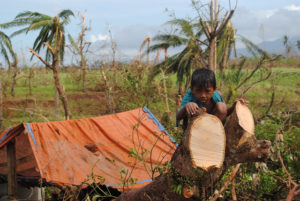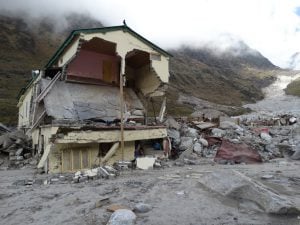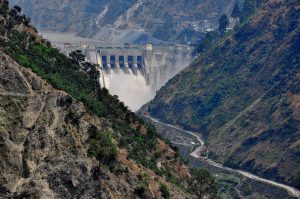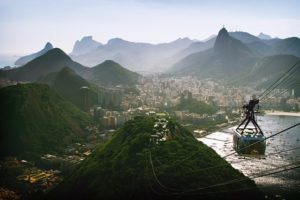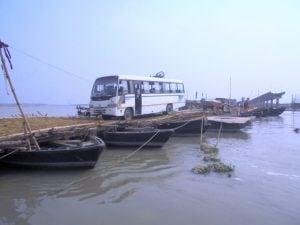Peru’s new president Pedro Pablo Kuczynski (known as PPK) has revealed his government’s intention to prioritise mineral extraction and trade relations with China in a series of actions and public statements. Since his victory in a runoff on June 5, Kuczynski has also declared the need for Peru to stimulate further economic activity by processing and refining minerals, in addition to simply exporting them.
China is Peru’s biggest investor. With this in mind Kuczynski – who will replace the outgoing Ollanta Humala at the end of the month – described as “necessary” a trip to China ahead of the Asia-Pacific Economic Cooperation (APEC) forum in Lima in November, his first official overseas visit. “China is our number one trading partner and they are the ones who purchase our minerals,” he said.
“We are an economy of enormous natural resources, but we have to industrialise and that is not easy to do. So we will have to work with those who buy significant amounts of our exports, which to a large extent, means China,” Kuczynski reiterated during the Eleventh Business Summit of the Chile-Pacific Alliance in Lima in June.
Peru’s relations with China date back many years before the latter’s wave of trade and investment deals with other South American countries, and have strengthened in recent years. However, three major mining projects – Río Blanco in northern Piura region, Toromocho in the Central Andes and Las Bambas in the Apurímac region – each have unresolved social conflicts, according to the ombudsman (Defensoría del Pueblo).
José Luis López Follegati, an expert on mining and social conflicts, told Diálogo Chino: “Chinese investments are welcome, but they have to comply with the standards of environmental and social responsibility in Peru. The State can’t just decide to promote investment [in mining] without first consulting with local communities.”
Las Bambas requires investment of US$5.8 billion and López Follegati expressed optimism about roundtable discussions aimed at getting the state to prioritise the development of the area. One of the main causes of conflict at Las Bambas is the lack of job opportunities beyond the initial construction phase. López Follegati pointed out that only 15% of the State investment programme has been carried out and local residents are demanding that it do more. There are currently four or five mining projects in existence in the area, improving the connectivity of which could offer more employment opportunities.
The future of investments
China is not simply Peru’s principal mining investor. As of last year, it has partnered with the Peruvian government in the controversial project to construct an 8,000km railway that would traverse South America and better connect Peru’s Pacific ports with the Chinese port of Tianjin. Various civil society organisations have warned about the environmental impact on Amazon forests. Technical studies to determine the viability and the route that the megaproject have not been carried out but according to Peruvian newspaper El Comercio, which had access to the memorandum of understanding to build the railway signed in 2014, assessments are the responsibility of China Railway Corporation and China Railway Engineering Eryuan Group (for China), Brazil’s Corporate Planning and Logistics Company, and Peru’s Highways and Railways Department, which reports to the Ministry of Transport.
The total value of bilateral trade between Peru and China currently stands at some US$15 billion. The two countries signed a free trade agreement on March 1 2010. Kuczynski reiterated the need to strengthen these ties and to promote the processing of minerals. However, one of the main metallurgical complexes in the country, La Oroya, is currently in receivership and was responsible for one of the most serious incidents of lead contamination in Peru.
Pointing to the copper refinery at Ilo on the Pacific coast, López Follegati said that Peru has the capacity, technology and experience to process minerals: “Peru has gleaned at least 30 or 40 years’ experience in processing minerals. But more could be done if one could extract more products such as copper, silver and zinc.” However, López Follegati acknowledged, that La Oroya “needs to be modernised, and to answer for its environmental policies”.
Different perspectives
In recent years, Peru’s growth has slowed from 6% per annum to an estimated 3% this year, according to the International Monetary Fund’s World Economic Outlook report. There are various explanations for this fall, but the consensus is that it is associated with the fall in international commodity prices and China’s economic slowdown.
“We are primarily an exporting country,” said Waldo Mendoza of the Catholic University. “What we are seeing in recent years are the leftovers from that bonanza era because the investments that made in those earlier years have matured in 2015 and 2016. What is happening now is a period in which that engine has shut off and it looks as if it is going to be shut down for an extended period,” he added.
Kuczynski said he wants to improve growth rates by reactivating mining investments. However, the opposition Frente Amplio (Broad Front), the leftist coalition that obtained 20 seats in congress in the elections and which supported Kuczynski’s candidacy against Keiko Fujimori in the runoff, have a different view on the economic model that the new government should prioritise.
Tania Pariona, a Frente Amplio congresswoman, insists that it is time for the Peruvian economy to stop focusing on growth based on the extraction of minerals: “The country needs to make a realistic projection of its investments taking the limits of the environment into account, respecting life and other products coming from the communities where resources are extracted,” she told Diálogo Chino adding; “what future is there for economic growth if human development is not taken into consideration?”
Pariona stated that in order to resolve ongoing social conflicts companies and the state needed to “strengthen mechanisms of dialogue with communities” and in good faith. “This is fundamental and we have said it on various occasions. The State must have a more timely and effective presence in the areas where conflicts arise.”
The Frente Amplio has said that it will be introducing a legislative initiative to revoke a series of measures known as the Paquetazo ambiental or “environmental package” (Paquetazo refers to the shock neoliberal economic reform packages introduced in some Latin American countries in the 80s and 90s) which aims to incentivise investment by slackening regulations. Among other issues, the reforms would make environmental audits more flexible.
When contacted by Diálogo Chino, Kucznski’s technical team refused to comment officially on these matters, nor did representatives of the majority party Popular Force, led by Keiko Fujimori. For his part, Lopez Follegati insisted that “it is important to strengthen Peru’s Environmental Assessment and Enforcement Agency (OEFA) and the use of new and better technologies and environmental guarantees, but sanctions must also be imposed”.
A former economy minister from the political right wing, Kuczynski’s Peruanos Por el Kambio party has only 18 seats in congress and it will be difficult for his government to implement its new agenda. In the coming weeks, Kuczynski will announce his cabinet but for now, his attention is on China with key dates in the coming months. On November 2, Peru and China will celebrate 45 years of diplomatic and on November 19, Kuczynski will host the APEC Forum 2016, attended by President Xi Jinping.
